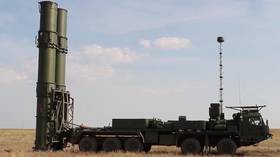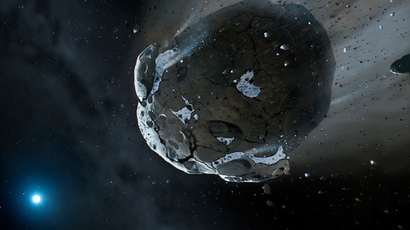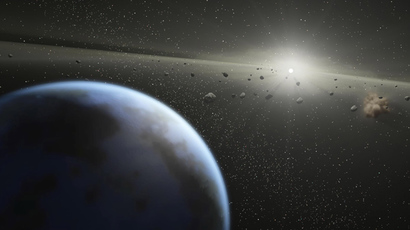556 asteroids size of washing machine hit Earth over past 20 years - NASA report
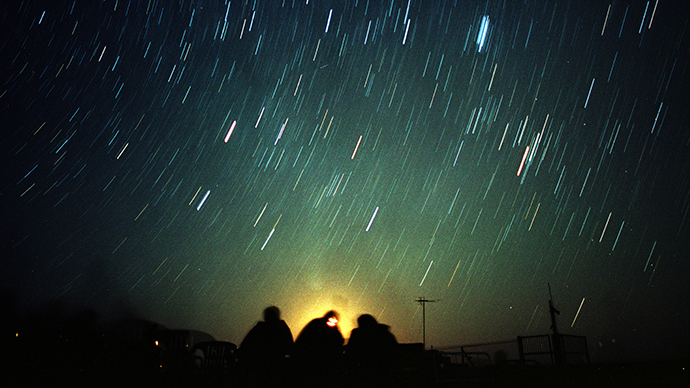
Asteroids of about a meter and larger in size invade our planet's atmosphere every other week, a study released by NASA shows. According to data gathered over the past 20 years, at least 556 such asteroids collided with Earth over this period.
According to the study, small impact events - also called fireballs or bolides - happen "all the time." The asteroids hit the atmosphere and disintegrate at a frequent and random rate, according to the data gathered by US government sensors and based on infra-sound detections.
"We now know that Earth's atmosphere does a great job of protecting Earth from small asteroids," said Lindley Johnson, executive of NASA's Near Earth Object (NEO) Observations Program.
The asteroids, marked on the NASA map, do not include smaller impacts, but - according to the study - our planet is bombarded with more than 100 tons of dust and sand-sized particles from space every day.
The observation program's aim is "to find potentially hazardous asteroids before they find us," according to Donald Yeomans, manager of NASA's NEO Program Office at the Jet Propulsion Laboratory.
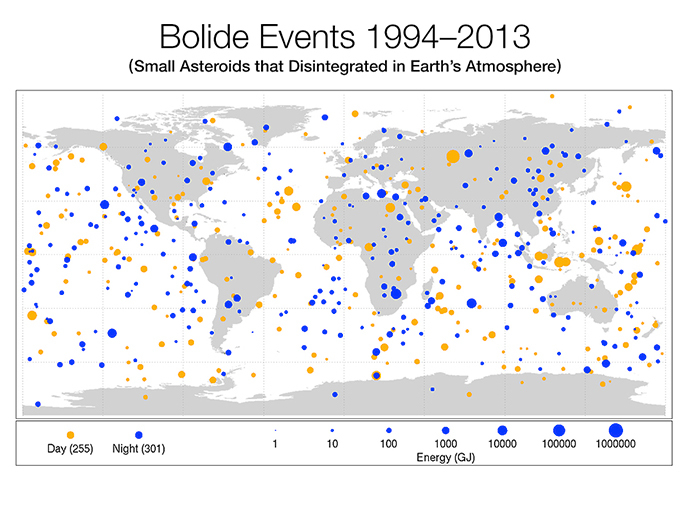
READ MORE: First #CometLanding in history as Rosetta's Philae
touches down
About once a year, a larger asteroid the size of a car hits
Earth's atmosphere without reaching its surface, creating a
spectacular fireball event while disintegrating - sometimes
explosively.
In September, one such fireball whistled across Spain, lighting
up its skies and leaving a trail of smoke through many of its
regions.
READ MORE: Great balls of fire: Meteor illuminates Spanish skyline
(VIDEO)
The largest impact recorded in the recently published study was
the Chelyabinsk meteor of about 20 meters in size, which hit the
atmosphere with the equivalent impact of 440,000–500,000 tons of
TNT and fell in Russia's Urals region in February 2013.
Scientists later found out the meteor that exploded above the
Russian city - which injured over 1,000 people and shocked
millions - was formed by a space collision.
READ MORE: Meteorite
hits Russian Urals: Fireball explosion wreaks havoc, up to 1,200
injured (PHOTOS, VIDEO)
The world's largest existing crater, which marks the biggest known cosmic intruder's hit, is the Vredefort crater in South Africa. It has an estimated radius of 118 miles (190 kilometers) and is some two billion years old.
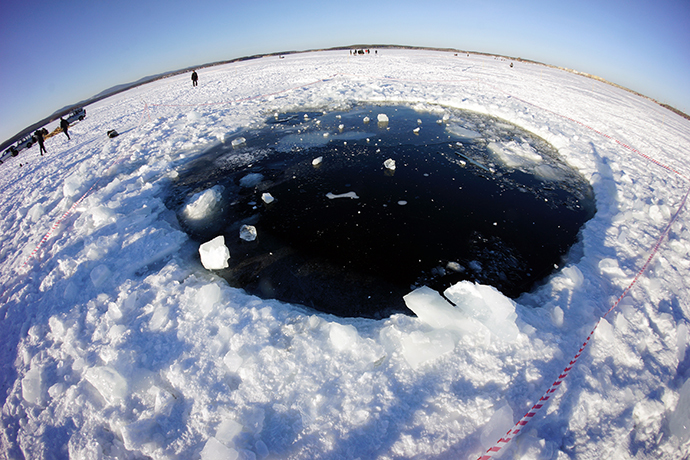
Other known asteroid impacts include the Popigai crater in Russia's Siberia - which is said to be one of the largest diamond deposits in the world - and the 53-mile-wide (85 kilometer) Chesapeake Bay crater in the US state of Virginia. Both craters are said to date back some 35 million years.
An object the size of a football field hits Earth approximately every 5,000 years and causes significant damage, studies of Earth's history indicate. The impact from an asteroid about half a mile in diameter could temporarily change global climate and kill millions of people. A space rock big enough to cause a larger global disaster impacts Earth every few million years on average.






